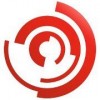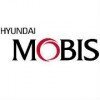Filter interviews by
Wabtec Junior Service Engineer Interview Questions and Answers
9 Interview questions
Quality policy is a set of guidelines and principles established by an organization to ensure consistent quality in products or services.
Quality policy outlines the organization's commitment to meeting customer requirements and continuously improving processes.
It includes objectives for quality management, responsibilities of employees, and methods for monitoring and measuring quality performance.
Examples of quali...
The braking system of diesel locomotives is crucial for safe operation and consists of various components.
The braking system of diesel locomotives typically includes air brakes, dynamic brakes, and sometimes even regenerative brakes.
Air brakes use compressed air to apply pressure to the brake pads, slowing down the locomotive.
Dynamic brakes convert the locomotive's traction motors into generators, creating resista...
The critical components of diesel locomotives include engine, transmission, fuel system, cooling system, and electrical system.
Engine: the heart of the locomotive, responsible for generating power
Transmission: transfers power from the engine to the wheels
Fuel system: supplies diesel fuel to the engine for combustion
Cooling system: prevents the engine from overheating
Electrical system: controls various functions su...
The cooling system of diesel locomotives is essential for maintaining optimal engine temperature and preventing overheating.
The cooling system typically consists of a radiator, water pump, thermostat, and coolant.
Coolant is circulated through the engine to absorb heat and then cooled in the radiator before returning to the engine.
Regular maintenance of the cooling system, including checking coolant levels and insp...
The propulsion system of diesel locomotives is responsible for converting fuel into mechanical energy to move the train.
Diesel engines power the locomotive by burning diesel fuel in cylinders to generate power
The power generated is transmitted to the wheels through a transmission system
The wheels then turn, propelling the train forward
Modern diesel locomotives may also have electric propulsion systems for increase...
Wabtec Corporation's mission is to provide innovative solutions for the transportation industry, guided by their vision of being a global leader in rail and industrial markets.
Wabtec's mission is to provide innovative solutions for the transportation industry.
Their vision is to be a global leader in rail and industrial markets.
Values include integrity, customer focus, innovation, and teamwork.
Examples of values in...
Key Performance Indicators (KPIs) of Wabtec Corporation include revenue growth, profit margin, customer satisfaction, and on-time delivery.
Revenue growth: Wabtec tracks the increase in revenue over a specific period of time.
Profit margin: Wabtec monitors the percentage of profit made from sales.
Customer satisfaction: Wabtec measures customer feedback and satisfaction levels.
On-time delivery: Wabtec evaluates the p...
Auxiliary systems in diesel locomotives support the main engine and provide additional functionalities.
Auxiliary systems include air compressors, cooling systems, fuel systems, and electrical systems.
Air compressors provide compressed air for braking and other pneumatic functions.
Cooling systems prevent the engine from overheating.
Fuel systems deliver fuel to the engine for combustion.
Electrical systems power ligh...
Wabtec policy focuses on safety, quality, and customer satisfaction.
Wabtec prioritizes safety in all operations and services.
Quality is a key aspect of Wabtec's policy to ensure reliable products and services.
Customer satisfaction is a top priority for Wabtec to maintain strong relationships and loyalty.
Wabtec policy also includes compliance with regulations and continuous improvement.
Examples: Regular safety trai...
Wabtec Junior Service Engineer Interview Experiences
1 interview found
I applied via LinkedIn and was interviewed before Nov 2023. There were 2 interview rounds.
(9 Questions)
- Q1. The critical components of diesel locomotives
- Ans.
The critical components of diesel locomotives include engine, transmission, fuel system, cooling system, and electrical system.
Engine: the heart of the locomotive, responsible for generating power
Transmission: transfers power from the engine to the wheels
Fuel system: supplies diesel fuel to the engine for combustion
Cooling system: prevents the engine from overheating
Electrical system: controls various functions such as...
- Q2. The braking system of diesel locomotives
- Ans.
The braking system of diesel locomotives is crucial for safe operation and consists of various components.
The braking system of diesel locomotives typically includes air brakes, dynamic brakes, and sometimes even regenerative brakes.
Air brakes use compressed air to apply pressure to the brake pads, slowing down the locomotive.
Dynamic brakes convert the locomotive's traction motors into generators, creating resistance t...
- Q3. Cooling system of diesel locomotives
- Ans.
The cooling system of diesel locomotives is essential for maintaining optimal engine temperature and preventing overheating.
The cooling system typically consists of a radiator, water pump, thermostat, and coolant.
Coolant is circulated through the engine to absorb heat and then cooled in the radiator before returning to the engine.
Regular maintenance of the cooling system, including checking coolant levels and inspectin...
- Q4. Propulsion system of diesel locomotives
- Ans.
The propulsion system of diesel locomotives is responsible for converting fuel into mechanical energy to move the train.
Diesel engines power the locomotive by burning diesel fuel in cylinders to generate power
The power generated is transmitted to the wheels through a transmission system
The wheels then turn, propelling the train forward
Modern diesel locomotives may also have electric propulsion systems for increased eff...
- Q5. Auxiliary system of diesel locomotives
- Ans.
Auxiliary systems in diesel locomotives support the main engine and provide additional functionalities.
Auxiliary systems include air compressors, cooling systems, fuel systems, and electrical systems.
Air compressors provide compressed air for braking and other pneumatic functions.
Cooling systems prevent the engine from overheating.
Fuel systems deliver fuel to the engine for combustion.
Electrical systems power lights, c...
- Q6. Deep knowledge of electrical components
- Q7. Deep knowledge of mechanical components
- Q8. KPI of Wabtec corporation
- Ans.
Key Performance Indicators (KPIs) of Wabtec Corporation include revenue growth, profit margin, customer satisfaction, and on-time delivery.
Revenue growth: Wabtec tracks the increase in revenue over a specific period of time.
Profit margin: Wabtec monitors the percentage of profit made from sales.
Customer satisfaction: Wabtec measures customer feedback and satisfaction levels.
On-time delivery: Wabtec evaluates the percen...
- Q9. Mission vision and values of Wabtec corporation
- Ans.
Wabtec Corporation's mission is to provide innovative solutions for the transportation industry, guided by their vision of being a global leader in rail and industrial markets.
Wabtec's mission is to provide innovative solutions for the transportation industry.
Their vision is to be a global leader in rail and industrial markets.
Values include integrity, customer focus, innovation, and teamwork.
Examples of values in acti...
(3 Questions)
- Q1. What is Quality policy
- Ans.
Quality policy is a set of guidelines and principles established by an organization to ensure consistent quality in products or services.
Quality policy outlines the organization's commitment to meeting customer requirements and continuously improving processes.
It includes objectives for quality management, responsibilities of employees, and methods for monitoring and measuring quality performance.
Examples of quality po...
- Q2. What is Safety policy
- Ans.
Safety policy is a set of rules and guidelines implemented by an organization to ensure the safety and well-being of employees and customers.
Safety policy outlines the procedures and protocols to be followed in order to prevent accidents and injuries.
It includes guidelines for the proper use of equipment, handling of hazardous materials, and emergency response protocols.
Safety policy also includes training programs for...
- Q3. What is Wabtec policy
- Ans.
Wabtec policy focuses on safety, quality, and customer satisfaction.
Wabtec prioritizes safety in all operations and services.
Quality is a key aspect of Wabtec's policy to ensure reliable products and services.
Customer satisfaction is a top priority for Wabtec to maintain strong relationships and loyalty.
Wabtec policy also includes compliance with regulations and continuous improvement.
Examples: Regular safety training ...
Interview Preparation Tips
Top trending discussions






Interview questions from similar companies
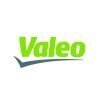
I applied via Referral and was interviewed before Sep 2020. There were 3 interview rounds.
Interview Questionnaire
1 Question
- Q1. Please explain about your profile
- Ans.
Experienced Senior Engineer with a strong background in software development, project management, and team leadership.
Over 10 years of experience in software engineering, specializing in full-stack development.
Led a team of 5 engineers in developing a scalable e-commerce platform, resulting in a 30% increase in sales.
Proficient in multiple programming languages including Java, Python, and JavaScript.
Implemented Agile m...
Interview Preparation Tips
Be bold in your explanations.
Questions mainly fall from your profile explanation.
Try to tell what you have worked with.
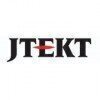
I applied via Approached by Company and was interviewed before Jan 2022. There were 4 interview rounds.

(2 Questions)
- Q1. Basic theoretical Questions of B.tech which are for fresher they asked for experienced also.
- Q2. Star delta diagram Resistance circuit
(1 Question)
- Q1. Why switching previous company
- Ans.
I switched to seek new challenges, enhance my skills, and align my career with my long-term goals in a dynamic environment.
Desire for professional growth: I wanted to take on more leadership responsibilities, which my previous role didn't offer.
Seeking new challenges: I was looking for opportunities to work on innovative projects that align with my interests in emerging technologies.
Cultural fit: I wanted to be part of...
(1 Question)
- Q1. Personal information
Interview Preparation Tips

Interview Questionnaire
2 Questions
- Q1. Software tool test on simple component
- Q2. You can use any tool to clear that.

I applied via Naukri.com and was interviewed in Nov 2023. There were 2 interview rounds.
(1 Question)
- Q1. Why you want to join us
(2 Questions)
- Q1. What is your role and responsibilities in privious company.
- Q2. What is your strength and weakness
Interview Preparation Tips

I applied via Walk-in and was interviewed in Dec 2021. There were 8 interview rounds.

(2 Questions)
- Q1. Basic information of condidate
- Q2. Job discription of machine
(2 Questions)
- Q1. Programming of cnc vmc
- Ans.
Programming of CNC VMC involves creating instructions for the machine to follow in order to produce a specific part.
Requires knowledge of programming languages such as G-code and M-code
Involves creating a step-by-step process for the machine to follow
Requires understanding of the machine's capabilities and limitations
May involve creating custom tool paths for specific parts
Examples include programming a CNC VMC to prod...
- Q2. Code of machining for making program
- Ans.
The code of machining for making a program involves creating instructions for a machine to follow in order to produce a desired output.
The program should include specific instructions for the machine to follow, such as tool selection, cutting speed, and feed rate.
The code should be optimized for efficiency and accuracy.
It is important to consider the material being machined and adjust the program accordingly.
Testing an...
(2 Questions)
- Q1. Given program for making a program of auto shaft
- Q2. Another given a making program on cnc machine
(2 Questions)
- Q1. Job profile discussion
- Q2. Job profile discussion about shop flor
(2 Questions)
- Q1. Group discussion with team
- Q2. Group discussion with team of production and plant head
Given a problem for solving on shop floor
Group discussion with team of production and plant head
Interview Preparation Tips
Skills evaluated in this interview

I applied via Approached by Company and was interviewed in May 2022. There were 4 interview rounds.

(1 Question)
- Q1. Basic HR question (tell me about yourself and similar)
(1 Question)
- Q1. Technical questions related to field
(1 Question)
- Q1. Interview cum interaction with top management
Interview Preparation Tips

I applied via Recruitment Consulltant and was interviewed in Nov 2022. There were 6 interview rounds.

(1 Question)
- Q1. Specified to the functional area by section head
(1 Question)
- Q1. Core QA questions by department head
(1 Question)
- Q1. Core QA questions by Plant Manager
(1 Question)
- Q1. Some character analysis questions by HR head
Introduction and few case study intraction with MD sir

I applied via Naukri.com and was interviewed in Jan 2024. There was 1 interview round.
(2 Questions)
- Q1. Line balancing & cycle time study
- Q2. Manpower handling
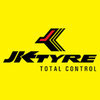
(2 Questions)
- Q1. About drive and working
- Q2. About plc and working
- Ans.
PLC (Programmable Logic Controller) is a digital computer used for automation of industrial processes.
PLCs are used to control machinery on factory assembly lines, amusement rides, or light fixtures.
They operate using a programmable memory to store instructions for specific tasks.
Example: A PLC can automate the process of filling bottles in a beverage factory.
PLCs can be programmed using ladder logic, structured text, ...
(2 Questions)
- Q1. About family and members
- Q2. Salary structure and expectations
Interview Preparation Tips
Wabtec Interview FAQs
Tell us how to improve this page.
Wabtec Interviews By Designations
- Wabtec Senior Software Engineer Interview Questions
- Wabtec Intern Interview Questions
- Wabtec Deputy Engineer Interview Questions
- Wabtec Test Engineer Interview Questions
- Wabtec Quality Analyst Interview Questions
- Wabtec Production Manager Interview Questions
- Wabtec Software Engineer Interview Questions
- Wabtec Mechanical Engineer Interview Questions
- Show more
Interview Questions for Popular Designations
- Senior Engineer Interview Questions
- Production Engineer Interview Questions
- Project Engineer Interview Questions
- Junior Engineer Interview Questions
- Service Engineer Interview Questions
- Site Engineer Interview Questions
- Maintenance Engineer Interview Questions
- Senior Electrical Engineer Interview Questions
- Show more
Overall Interview Experience Rating
based on 2 interview experiences
Difficulty level
Interview Questions from Similar Companies
Wabtec Junior Service Engineer Reviews and Ratings
based on 1 review
Rating in categories
|
Junior Engineer
156
salaries
| ₹2.4 L/yr - ₹6 L/yr |
|
Assistant Engineer
153
salaries
| ₹3.6 L/yr - ₹6.6 L/yr |
|
Lead Engineer
98
salaries
| ₹8.2 L/yr - ₹28 L/yr |
|
Senior Software Engineer
84
salaries
| ₹16 L/yr - ₹28 L/yr |
|
Deputy Engineer
61
salaries
| ₹5 L/yr - ₹8.9 L/yr |

JK Tyres

Hitachi Astemo

Faurecia

Valeo
- Home >
- Interviews >
- Wabtec Interview Questions
